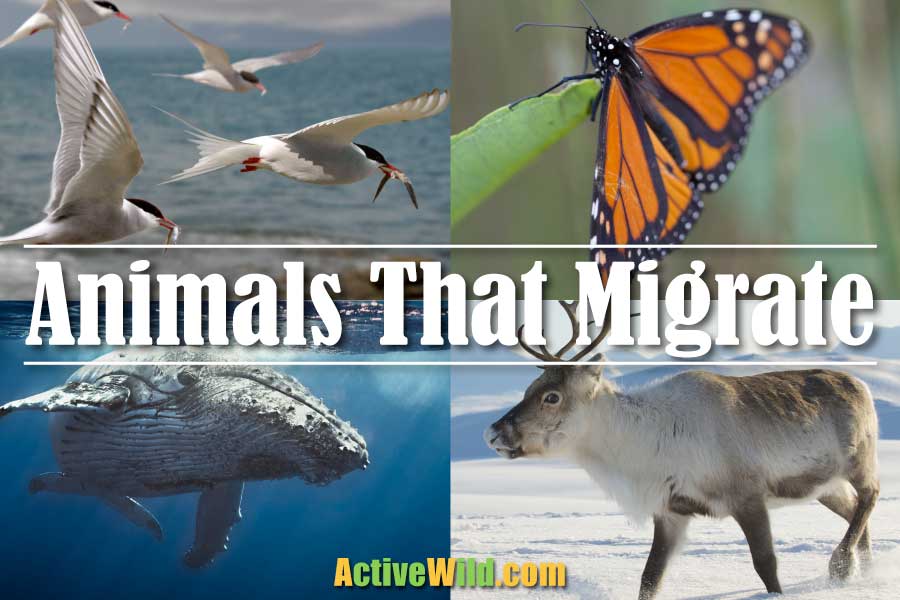Examples of animals that migrate include the gray whale, caribou, monarch butterfly, Arctic tern, bar-tailed godwit, Canada goose, Chinook salmon, leatherback sea turtle and blue wildebeest. The best-known and most visible migratory animals are birds, but mammals, reptiles and even insects and amphibians all have migratory species.
On this page is a list of some of the best-known animals that migrate, together with facts about animal migration…
Page Index
- Animal Migration Facts
- List of Animals that Migrate
Animal Migration

Many cetaceans (whales, dolphins and porpoises) are migratory. Pictured above is a humpback whale
What Is Migration?
As the seasons change, many animals travel from place to place in search of food or better weather. Certain motions are cyclical, with the animal departing one environment and returning on an annual cycle in certain circumstances. Migrations are rhythmic motions that move in a certain way.
Why Do Animals Migrate?
The desire to migrate is deeply ingrained in the psychology of certain migratory animals. Even captive birds, which do not have to migrate, become restless and hyperactive when the migration season approaches, as migratory birds demonstrate an increase in restlessness.
Migratory behavior is one of the most active research topics in animals today. Researchers have access to vast new sources of data thanks to online citizen science initiatives (where individuals can log what creatures they see in their region) and increasingly sophisticated GPS technology. Migration animations for hundreds of bird species have been released by ebird.org, for example. A similar project monitoring massive seasonal migrations across the Pacific Ocean is being carried out by the Census of Marine Life.
How do these animals know where they’re going is one of the great migration science mysteries. Do they use the stars to navigate? Do they rely on landmarks?
Some migratory birds have a magnetically sensitive protein in their eyes, according to recent research. The protein responds to magnetic fields rather than light waves, just like a light receptor would. As a result, these birds have a built-in compass in their visual system, allowing them to see which way is north.
List Of Animals That Migrate
Bar-Tailed Godwit
Migrates between Alaska and New Zealand
- Scientific name: Limosa lapponica
- Conservation status: Near Threatened

At first glance, the bar-tailed godwit (apart from its long bill) appears to be a long-legged wading bird.
The bar-tailed godwit is one of the most amazing birds in the world, with appearances that may be deceiving.
The bird’s breeding habitat is in the Arctic during the summer. The bird migrates south as the weather gets colder, with some birds only pausing on their arrival in New Zealand or Australia!
A bar-tailed godwit may travel up to 7,500 miles (12,070 km) in order to move from its breeding grounds to its feeding grounds.
The journey time of this vast distance is even more amazing; one bird took 11 days to fly from Alaska to New Zealand!
Not only for the longest non-stop flight by a bird, but also for the longest journey without stopping to feed for any animal, the bar-tailed godwit holds the record.
Canada Goose
- Scientific name: Branta canadensis
- Conservation status: Least Concern

Geese come to mind when we talk about migration, particularly those enormous V-shaped groups that honk their way south for the winter.
In North America, where it is frequently seen in parks and other public places, the Canada goose is one of the most well-known geese. The black neck and head, as well as white cheeks, gray wings, and a white rump, distinguish it.
The geese migrate south to Mexico and the southern United States in a classic migratory pattern. Fly north for the winter and return south for the summer. Most birds took part in the migration, even if there were originally non-migratory populations in temperate regions.
However, more non-migratory geese have been observed in recent decades. Year-round residents who never go to Canada or Mexico now make up more than half of the Canada geese on the East Coast.
Nonetheless, more non-migratory geese have appeared in recent decades. Year-round residents who never visit Canada or Mexico now make up more than half of Canada geese on the East Coast.
After being introduced from North America, Canada geese are now a common sight in the UK and northern continental Europe. Birds in the north are migratory, but a few birds remain year-round.
Snow Goose
- Scientific name: Anser caerulescens
- Conservation status: Anser caerulescens
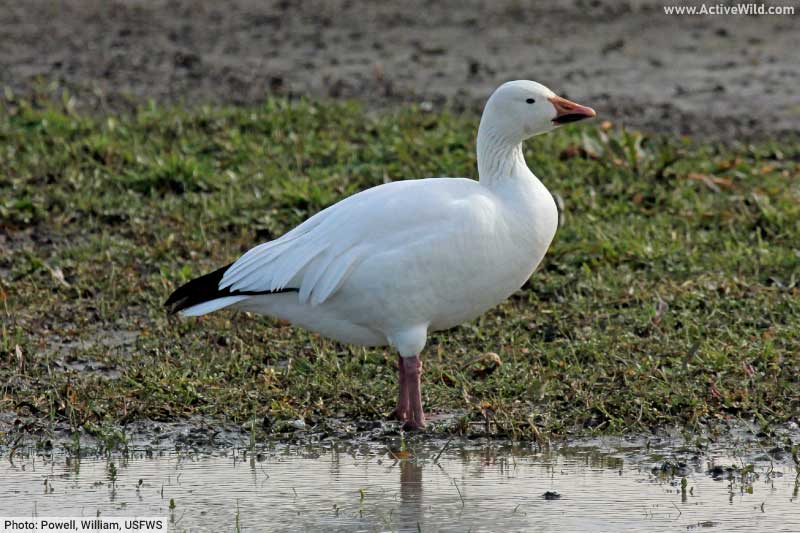
The snow goose is another well-known migratory goose species. There are two color variations or morphs in the species. Snow geese are all-white with black wingtips in their natural condition. The back and chest of the morph known as the “blue goose” are brown. White heads and enormous pinkish beaks are found on all adult snow geese.
During the summer, snow geese breed in the Arctic tundra before migrating to the United States and Central America for winter.
Arctic Tern
Longest migration of any animal
- Scientific name: Sterna paradisaea
- Conservation status: Least Concern

Even tiny creatures, especially those with the benefit of flight, may travel vast distances during migration. Each year, the Arctic tern flies from Antarctica to the Arctic Circle and back again, covering the entire circumference of the Earth. The birds may travel up to 60,000 miles per year, which is a quarter of the distance to the moon in extreme cases.
The fact that the Arctic tern does not follow a straight north/south path is one of the reasons for its remarkable length of migration. They glide with the wind, which carries them in meandering circles as they travel from one end of the globe to the other, saving energy.
Caribou
Longest Water Migration
- Scientific name: Rangifer tarandus
- Conservation status: Vulnerable

Which land animal has the longest migration journey is unknown. Grey wolves are thought to be some of the most mobile creatures, according to a study published recently, but their migrations aren’t cyclical, hence they shouldn’t be called “migrations.”
The animal with the greatest recorded terrestrial migration is caribou. This enormous deer, sometimes known as a reindeer, lives in the Arctic.
Caribou are the animals with the greatest potential for a long-distance migration. The Arctic home of this huge deer, often known as a reindeer, is vast.
Gray Whale
Longest Water Migration
- Scientific name: Eschrichtius robostus
- Conservation status: Least Concern

In order to find food, many whales travel long distances. These migrations are so far away from land that scientists have little idea what is going on. The migration might be totally undetectable to science unless the whales approach shore, where they may be seen.
The gray whale is currently the longest-known aquatic migrant. A swimmer completed a distance of more than 13,000 miles from the shore of Siberia to Mexico along the Bering Strait and down the North American Pacific coast in 2015.
Humpback Whale
- Scientific name: Megaptera novaeangliae
- Conservation status: Least Concern
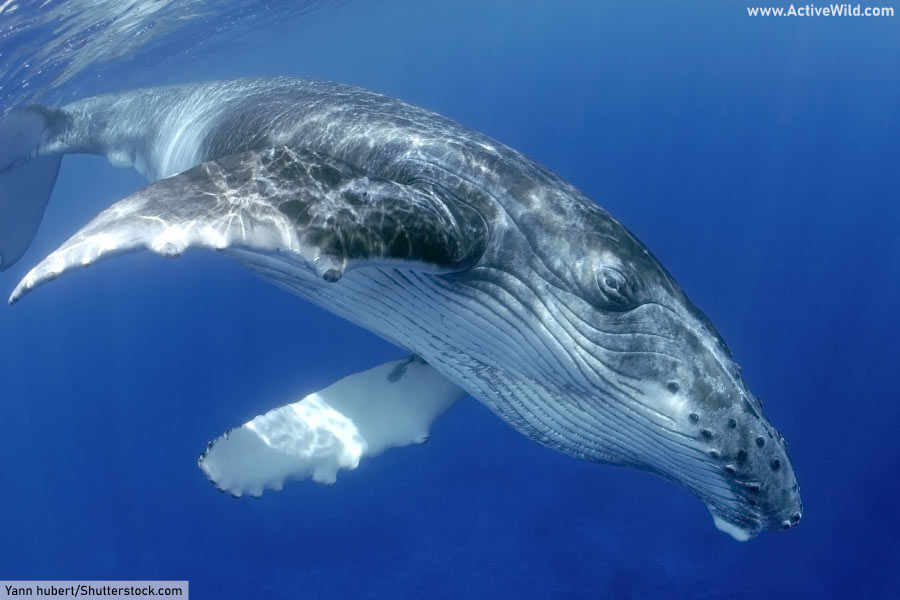
The humpback whale is another whale that is well-known for its migration. It’s a baleen whale, much like the gray one. These toothless behemoths filter tiny fish and krill from the water to survive.
The bumps on the humpback whale’s head and jaw, which are known as “tubercles,” can be used to identify it. One of numerous cetaceans (marine mammals like whales, dolphins, and porpoises) that migrate is the 20,000 to 30,000 kg marine mammal that can be found across the globe’s oceans.
In the North Pacific, Atlantic, Southern Ocean, and Indian Oceans, there are separate populations of humpback whales. Whales migrate to their breeding grounds closer to the Equator in the winter, with each population having a different migration pattern.
A journey of around 5,200 mi (8,300 km) is known to have been undertaken by a small group of humpback whales from Antarctica to Central America’s Pacific coast.
Blue Wildebeest
Largest Migration by Biomass
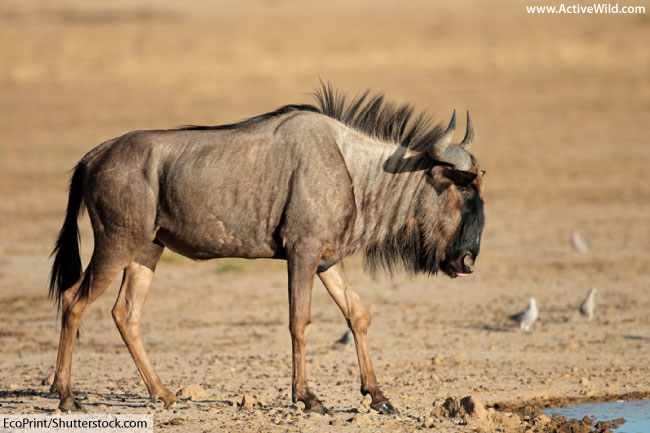
- Scientific name: Connochaetes taurinus
- Conservation status: Least Concern
The wildebeest, or gnu, has a truly “massive” migration, so the caribou might go farther. Seasonal shifts in rainfall may make once-abundant meadows dry, dusty, and difficult for huge herds of browsers in the grassy plains of southeast Africa. About 1.5 million wildebeest are migrating, weighing around 600 pounds apiece, which equals about a billion pounds of moving biomass!
Serengeti National Park is home to the majority of the world’s blue wildebeest. The migratory path of the creatures is roughly circular here. During the calving season, the migrations continue unceasingly; even the herds pause. When a blue wilderbeest calf is born, however, the infant can stand within minutes. In a year, the wildebeest migrate 800 kilometers (1,287 km).
Great White Shark
- Scientific name: Carcharodon carcharias
- Conservation status: Vulnerable
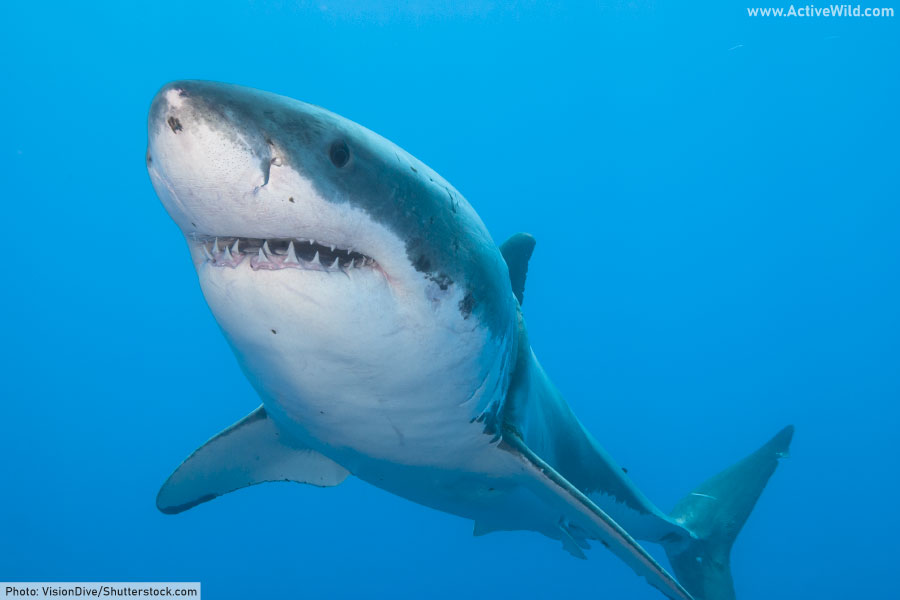
The great white shark, like so many other open-ocean species, is a mystery. It was thought to be primarily a coastal species for decades.
Great whites migrate from coastal waters to the open ocean with the seasons, which we now know is not true. They may prey on juvenile seals and sea lions during the winter months off the coast of California. They might, however, go hundreds of miles out at sea during the summer months.
Scientists assume that the large fish are either looking for new prey or congregating to breed, although they aren’t certain why the sharks move.
Galápagos Tortoise
- Scientific name: Chelonoidis donfaustoi
- Conservation status: Vulnerable

It looks like the last animal you’d expect to see migrating is the gigantic, slow-footed Galápagos tortoise. It survives on small volcanic islands and is sluggish and ungainly, so how far can it really go?
According to recent research, Galápagos tortoises migrate yearly, especially fully grown males. During the rainy season, the tortoises on Santa Cruz island stay near the shore, where there is plenty of vegetation.
The tortoises go uphill to the more humid highlands, where fog provides moisture for plants, as the seasons change and the plants dry up.
The tortoises spin around and return to the ground when the rain returns. For a human, the journey is barely more than a day walk; it’s 10-20 kilometers long. However, crossing rough terrain is a long and difficult task for a tortoise.
Every person does not migrate, despite what you may think. Year-round, hatchlings and juvenile tortoises stay at sea level. They’re presumably tiny enough to subsist on the limited vegetation available at this time of year; bigger animals have to roam in search of sustenance.
Humboldt Squid
Vertical Migration

- Scientific name: Dosidicus gigas
- Conservation status: Data Deficient
The Humboldt squid, or “wolf” of the mollusc world, is a gigantic, inquisitive, and clever pack hunter.
The squid, as far as we know, does not travel in the traditional sense. During the seasons, I travel from town to town. Vertical migration in the water column, on the other hand, is a different type of migration.
In the ocean twilight zone, a location with high pressure and minimal light, the Humboldt squid usually lives a half-mile below the surface. However, it swims up to the surface at night in order to pursue its meal.
The diel vertical migration, which takes place in deep oceans, includes the Humboldt squid as one of its participants. Plankton, which float to the surface at night for reasons scientists don’t yet understand, are thought to be responsible for the deep-water-to-surface migration. Predators, such as the Humboldt squid, pursue the plankton and are chased by other predators.
Monarch Butterfly
Life and Death on the Wing
- Scientific name: Danaus plexippus
- Conservation status: Least Concern

From California to Maine, the migratory habits of monarch butterflies create colorful displays of summer in gardens throughout North America.
The orange butterflies migrate north to find milkweed to feed their newly born caterpillars after spending the winter in Mexico.
Milkweed gives monarch caterpillars the nutrients, energy, and chemical compounds that make them poisonous to predators, which is a vital component of their evolutionary success. The caterpillars will pupate, emerge as a new generation of butterflies, and go south for Mexico after being fattened up on milkweed.
However, unlike migratory birds or whales, no one monarch makes the complete journey. Monarchs only live a few weeks, so they must breed and lay eggs on their way up from Mexico, which is many generations long. Their youngsters will continue north on their journey.
Surprisingly, the genetic regulatory system of late-season butterflies is completely altered: these late-season butterflies will survive up to eight times longer than their early-season counterparts, enough to complete the journey back to Mexico in a single generation.
Chinook Salmon
- Scientific name: Oncorhynchus tshawytscha
- Conservation status: Not Rated

Native people in the Pacific Northwest have livong off the yearly migrations of salmon for tens of thousands of years since their arrival in North America. The chinook salmon, sometimes known as the “king salmon,” is a huge and nutritional fish that originated in Washington and Oregon’s Chinook tribes.
The long journey of Chinook salmon from the Pacific’s open seas to spawning areas as far inland as Idaho is one of their most remarkable characteristics.
The salmon build enormous fat reserves throughout their saltwater phase, which will assist them on their upstream migration (as well as explain why they are so tasty). Salmon will never leave their ancestral pools after spawning, even if they die where they lay their eggs. Adults’ corpses will attract insect larvae, which the offspring will eat.
